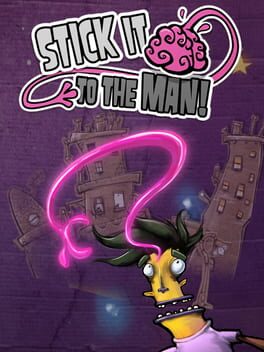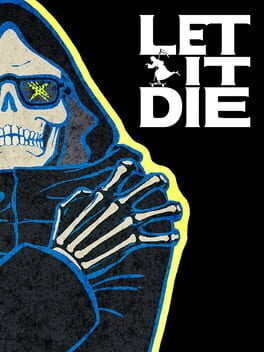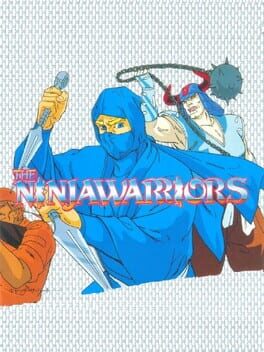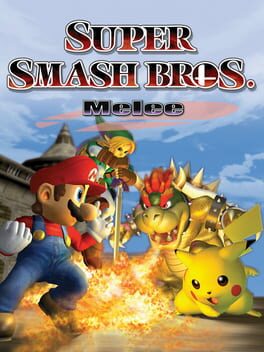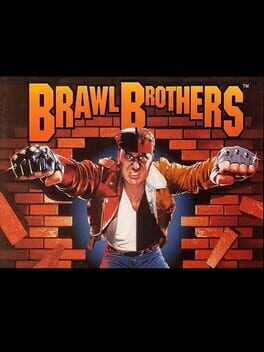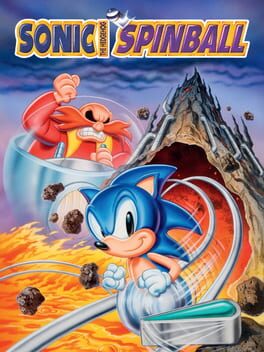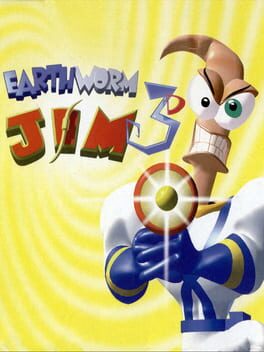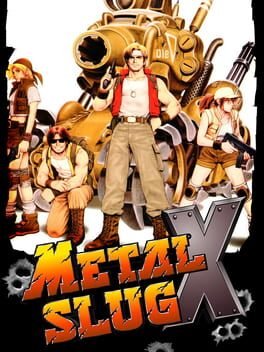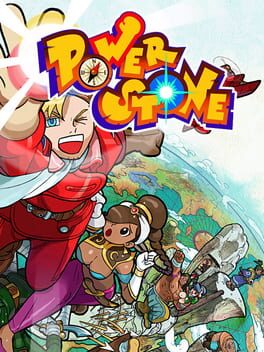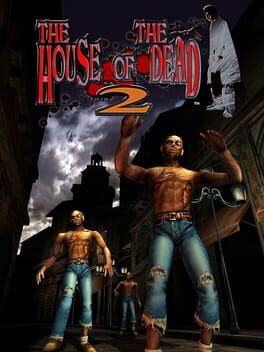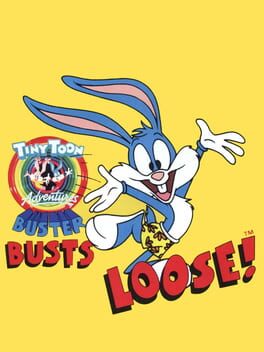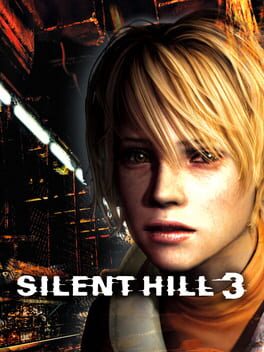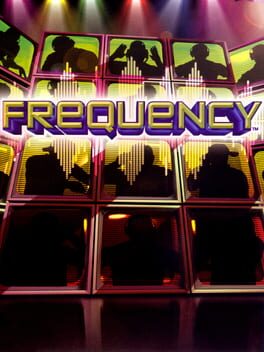2013
A kooky game with an endearing art style, especially for those that appreciate that gross 90s feel that was pretty common during that generation. Stick It to the Man has a fun little story to tell full of charming characters in what I can only assume was an allegory for empathy in society.
Even if it wasn't, I laughed a lot!
Even if it wasn't, I laughed a lot!
2016
I sunk a ridiculous amount of hours into this game. I made an analysis video on the experience. I made this game part of my morning routine for at least two years. And finally putting it down for good (probably), all I can do is look at the screen in 2022 and say "shit."
Let It Die is pretty cool . . . for a f2p game. It doesn't really bare any pay2win mechanics, as it asks for your time, rather than your money. The mountain of grinding this game demands is gigantic, and that's just in regards to clearing the first 40 floors that is the original campaign (which I've done on a fresh save twice). Never-mind the floors above 40 which only ramp up its difficulty.
However, the game is undeniably tedious and monotonous. Enemy variety is very low, as most equate to merely being bots with equipment you can also get yourself. And the difficulty spikes get very annoying past the 12th or so floor. It's a frustrating game that I won't argue in its defense whenever folks decide they don't want to put in the time to clear the main campaign. I can't ignore its highlights though, such as the unique soundtrack and charming atmosphere full of personality. The host, Uncle Death, is a pretty fun character as well.
There's probably a conversation to be had about this kind of game being put in a $60 product. For a simple style of traversing and combat, it would certainly had to have done a lot more with its core design to be a full-priced game, but with so many games doing what this game already does, I'm not sure if that would be worth it.
With its sequel "Deathverse" approaching soon, I think it's the best time to put down this game and look forward to the new experience instead.
Let It Die is pretty cool . . . for a f2p game. It doesn't really bare any pay2win mechanics, as it asks for your time, rather than your money. The mountain of grinding this game demands is gigantic, and that's just in regards to clearing the first 40 floors that is the original campaign (which I've done on a fresh save twice). Never-mind the floors above 40 which only ramp up its difficulty.
However, the game is undeniably tedious and monotonous. Enemy variety is very low, as most equate to merely being bots with equipment you can also get yourself. And the difficulty spikes get very annoying past the 12th or so floor. It's a frustrating game that I won't argue in its defense whenever folks decide they don't want to put in the time to clear the main campaign. I can't ignore its highlights though, such as the unique soundtrack and charming atmosphere full of personality. The host, Uncle Death, is a pretty fun character as well.
There's probably a conversation to be had about this kind of game being put in a $60 product. For a simple style of traversing and combat, it would certainly had to have done a lot more with its core design to be a full-priced game, but with so many games doing what this game already does, I'm not sure if that would be worth it.
With its sequel "Deathverse" approaching soon, I think it's the best time to put down this game and look forward to the new experience instead.
2017
A fairly unique defense rogue-lite RPG, but it gets way too frustrating, especially as you approach the endgame and just a single character dies at an instant, due to the horrible balancing issues that rears its head more than ever near the end.
There's things that I like about the game, such as the stamina and attack system that calls for arithmetic math on-the-fly (which I kinda love), but it gets so tedious the farther you get and unlocking new heroes is so insanely cumbersome, considering how damn hard it is just to clear the campaign.
I bought this for $20 out of desperation for Nintendo Switch games when the console launched, but only dove deep recently. After weeks of playing it, I decided it just isn't worth trying for new heroes besides the ones I managed to unlock.
There's things that I like about the game, such as the stamina and attack system that calls for arithmetic math on-the-fly (which I kinda love), but it gets so tedious the farther you get and unlocking new heroes is so insanely cumbersome, considering how damn hard it is just to clear the campaign.
I bought this for $20 out of desperation for Nintendo Switch games when the console launched, but only dove deep recently. After weeks of playing it, I decided it just isn't worth trying for new heroes besides the ones I managed to unlock.
2012
A flawed point-n-click story-driven adventure that has a lot of heart, which makes a lot of its shortcomings more forgivable. I didn't really care how easily you can see the bones and linearity of the narrative that desperately tries to disguise itself as a "choose your own adventure" when really you're barely able to change anything throughout.
Still, that doesn't matter because the characters in their own right are charming and gripping, most especially Lee, the main protagonist. It's no wonder why this game was so revered and is commonly cited as Telltale's best title.
Still, that doesn't matter because the characters in their own right are charming and gripping, most especially Lee, the main protagonist. It's no wonder why this game was so revered and is commonly cited as Telltale's best title.
1988
The most impressive thing about The Ninja Warriors is its ultra-widescreen resolution, and the gigantic arcade cabinets that had to be built to house this game. That's really cool! Unfortunately, the novelty of that is completely lost when you merely emulate the game, leaving a very mundane--albeit ambitious--beat-em-up that doesn't feel that good to play and has weird difficulty spikes. It wouldn't be until the SNES reboot (and its perfect remake on Switch) where this series truly shines.
Another case of "what the hell can I really say about this game that hasn't already been said?" Super Smash Bros. Melee was simply incredible and I would think it's no question why it's revered by both casual fans and competitive players.
I still recall seeing previews of this game months before the Gamecube was set to launch, and the look alone blew me away. Seeing all these different franchises merge into a single art style with so much detail was completely new to me back when I was only 11 years old.
I also remember demos in Gamestops and Best Buys that were so damn generous, where pretty much everything the full game offers by default was available, so many stages and characters to play as! This was the only time I had that feeling where going back and playing the older game, all I could think was "this isn't good enough!" but had to wait a while before I can get my hands on both a Gamecube and Melee.
Besides the 1-on-1 competitive aspect (which I imagine everyone is well aware of), the game's content is flourishing as well! I loved the Adventure mode which let you pass by all these familiar Nintendo worlds with any character of your choosing. The event matches were also very creative and fun to clear back in the day.
If it wasn't for the stellar presentation, the mechanics and feel of this game carry it so far. You'll be hard-pressed to find any other fast-paced [REDACTED] that feels as good as Melee! Everything about this game hit all the right notes back then, and it's something that can never be replicated.
I still recall seeing previews of this game months before the Gamecube was set to launch, and the look alone blew me away. Seeing all these different franchises merge into a single art style with so much detail was completely new to me back when I was only 11 years old.
I also remember demos in Gamestops and Best Buys that were so damn generous, where pretty much everything the full game offers by default was available, so many stages and characters to play as! This was the only time I had that feeling where going back and playing the older game, all I could think was "this isn't good enough!" but had to wait a while before I can get my hands on both a Gamecube and Melee.
Besides the 1-on-1 competitive aspect (which I imagine everyone is well aware of), the game's content is flourishing as well! I loved the Adventure mode which let you pass by all these familiar Nintendo worlds with any character of your choosing. The event matches were also very creative and fun to clear back in the day.
If it wasn't for the stellar presentation, the mechanics and feel of this game carry it so far. You'll be hard-pressed to find any other fast-paced [REDACTED] that feels as good as Melee! Everything about this game hit all the right notes back then, and it's something that can never be replicated.
1992
The cover art is the best part of the game. Sonic Spinball is a poor attempt to work a franchise into the theme of pinball (which is weirdly common, if you ask me). The idea of being a ball that can manipulate its trajectory in a pinball game is a good idea . . . if the physics were accurate, but it's so finicky and inconsistent. Also the tables aren't that interesting either, causing frustration pretty often when you're merely looking to find the paths to clear them.
I found some satisfaction in actually taking the time to sit down and play it from beginning to end, but it's so obvious why it isn't revered as a classic, but rather a strange early point of Sonic. I imagine it wouldn't even be remembered all that well if Sega didn't constantly port it and include it in all collections regarding Sonic/Genesis games.
I found some satisfaction in actually taking the time to sit down and play it from beginning to end, but it's so obvious why it isn't revered as a classic, but rather a strange early point of Sonic. I imagine it wouldn't even be remembered all that well if Sega didn't constantly port it and include it in all collections regarding Sonic/Genesis games.
1999
1999
Now THIS is how you do a sequel. While I'm not entirely sure what happened with Metal Slug 2's development, I appreciated that the developers decided to remake it with a new engine they built for Metal Slug 3, and that's how you got Metal Slug X!
Compared to the original version, Metal Slug X has new enemy types, new weapon types, more dynamic confrontations with remixed enemy/weapon/vehicle spawns, and--most importantly--much more responsive gameplay that doesn't slow down nearly as much.
All-in-all, this is the most defining game in the Metal Slug series, but of course it wouldn't be until the next game that we'd receive run-n-gun arcade perfection . . .
Compared to the original version, Metal Slug X has new enemy types, new weapon types, more dynamic confrontations with remixed enemy/weapon/vehicle spawns, and--most importantly--much more responsive gameplay that doesn't slow down nearly as much.
All-in-all, this is the most defining game in the Metal Slug series, but of course it wouldn't be until the next game that we'd receive run-n-gun arcade perfection . . .
1999
A good early 3D arena brawler that might not have the deepest mechanics or refined gameplay, but damn is it full of charm!
The character designs, the triumphant music that screams adventure (fitting the theme of the game perfectly), and the clobbering action is a real delight! I have faint memories of playing this at a friend's house that got a Dreamcast pretty early, and it made me so damn jealous! It just felt so good to play! Perfect for a 9 year-old that only liked bashing buttons while bashing opponents. The single-button combos and easy-to-understand mechanics makes it a very easy game to pick up and play.
Also, can't help but notice 2 of the 3 headers on this page are from Power Stone 2, not 1.
The character designs, the triumphant music that screams adventure (fitting the theme of the game perfectly), and the clobbering action is a real delight! I have faint memories of playing this at a friend's house that got a Dreamcast pretty early, and it made me so damn jealous! It just felt so good to play! Perfect for a 9 year-old that only liked bashing buttons while bashing opponents. The single-button combos and easy-to-understand mechanics makes it a very easy game to pick up and play.
Also, can't help but notice 2 of the 3 headers on this page are from Power Stone 2, not 1.
A great successor that expanded on concepts and presentation while doing some globetrotting! The House Of the Dead 2 is likely the most popular entry in the series, and that's for good reason! It's fun, fast-paced, and is teeming with a fun art style and sound design, it's always a blast to play! While SEGA was having trouble in the console department, their output in the arcade scene showed no signs of slowing down!
Of course, I can't forget that the goofy voice-acting helped make this a memorable experience as well. It's hard to say if it was lack of direction or something else, but there's mysterious sense of endearment coming from it. It almost alleviates the dreary and gory zombie-slaying experience to make it more charming and funny.
I can't wait for this to also get a garbage-ass remake.
Of course, I can't forget that the goofy voice-acting helped make this a memorable experience as well. It's hard to say if it was lack of direction or something else, but there's mysterious sense of endearment coming from it. It almost alleviates the dreary and gory zombie-slaying experience to make it more charming and funny.
I can't wait for this to also get a garbage-ass remake.
A reasonably good game, considering the sporadic quality regarding games based on pre-existing IPs back then. Buster Busts Loose is a really neat platformer that tried to ride the line of speed and careful control.
Something that holds it back, in my opinion--and something the devs couldn't help--is the fact that it's not in widescreen. Unlike Sonic, the design makes way for points where you can't react quickly enough to what's coming, so the game feels unfair more often than the more well-known blue blur of the gamingsphere.
Regardless, it feels pretty good to play and satisying to see they kind of gave a shit when it came to providing a challenging game for Tiny Toons fans. I also like how a decent chunk of the game is locked out if you choose Easy difficulty.
Something that holds it back, in my opinion--and something the devs couldn't help--is the fact that it's not in widescreen. Unlike Sonic, the design makes way for points where you can't react quickly enough to what's coming, so the game feels unfair more often than the more well-known blue blur of the gamingsphere.
Regardless, it feels pretty good to play and satisying to see they kind of gave a shit when it came to providing a challenging game for Tiny Toons fans. I also like how a decent chunk of the game is locked out if you choose Easy difficulty.
2003
An incredible sequel to the original Silent Hill on all counts. The gameplay, narrative, and presentation in Silent Hill 3 was 100% for the fans of the original game, rather than the paradigm shift we saw in Silent Hill 2, which went for a more dreary, depressing atmosphere along with more relaxed gameplay when compared to the original game. Silent Hill 2 was still scary, but Silent Hill 3 REALLY goes for your senses with its grotesque imagery and panic-inducing scenarios that'll really trigger your "fight-or-flight" response.
Like Harry proving he can fight vicious threats better than your typical S.T.A.R.S agent, Heather evolves the survivor's way of fighting even further with more options, such as strafing and blocking. The monster designs are also a sight to behold, and the puzzles are even more brain-teasing than ever! Without explaining the entire puzzle, the number pad in the hospital (on hard mode) is one I'll never forget, it was simply genius!
The story itself is also heart-rending, especially for those that experienced and understood the events of the original game. It feels like a definitive end to the series, and the performances by all of the actors are some of the best of this generation!
I guess I'll end this review saying it's funny how the "Haunted Mansion" scenario that parodied typical jumpscare bullshit in the game is what it would end up becoming shortly after this series was hocked off to the likes of Climax and Double-Helix.
Like Harry proving he can fight vicious threats better than your typical S.T.A.R.S agent, Heather evolves the survivor's way of fighting even further with more options, such as strafing and blocking. The monster designs are also a sight to behold, and the puzzles are even more brain-teasing than ever! Without explaining the entire puzzle, the number pad in the hospital (on hard mode) is one I'll never forget, it was simply genius!
The story itself is also heart-rending, especially for those that experienced and understood the events of the original game. It feels like a definitive end to the series, and the performances by all of the actors are some of the best of this generation!
I guess I'll end this review saying it's funny how the "Haunted Mansion" scenario that parodied typical jumpscare bullshit in the game is what it would end up becoming shortly after this series was hocked off to the likes of Climax and Double-Helix.
2001
The Prometheus to Harmonix's future endeavors, Frequency is a great idea for a rhythm game, but implemented in a presentation so hideously garish and obtuse, you would think space aliens designed the graphics and visuals.
Frequency came from a place where Harmonix got an opportunity to work with Sony in order to provide unique, rhythmic action in a way that emulated the style of reading music sheets, while not needing the wherewithal in order to play these raving tracks for high scores! A predecessor of what's the come.
It's a very humble game with a humbling soundtrack (mostly licensed from other artists, but no huge names besides No Doubt). The sequel would flesh out the concept in a way that wasn't just more enjoyable, it also didn't look like visual nonsense.
Frequency came from a place where Harmonix got an opportunity to work with Sony in order to provide unique, rhythmic action in a way that emulated the style of reading music sheets, while not needing the wherewithal in order to play these raving tracks for high scores! A predecessor of what's the come.
It's a very humble game with a humbling soundtrack (mostly licensed from other artists, but no huge names besides No Doubt). The sequel would flesh out the concept in a way that wasn't just more enjoyable, it also didn't look like visual nonsense.
